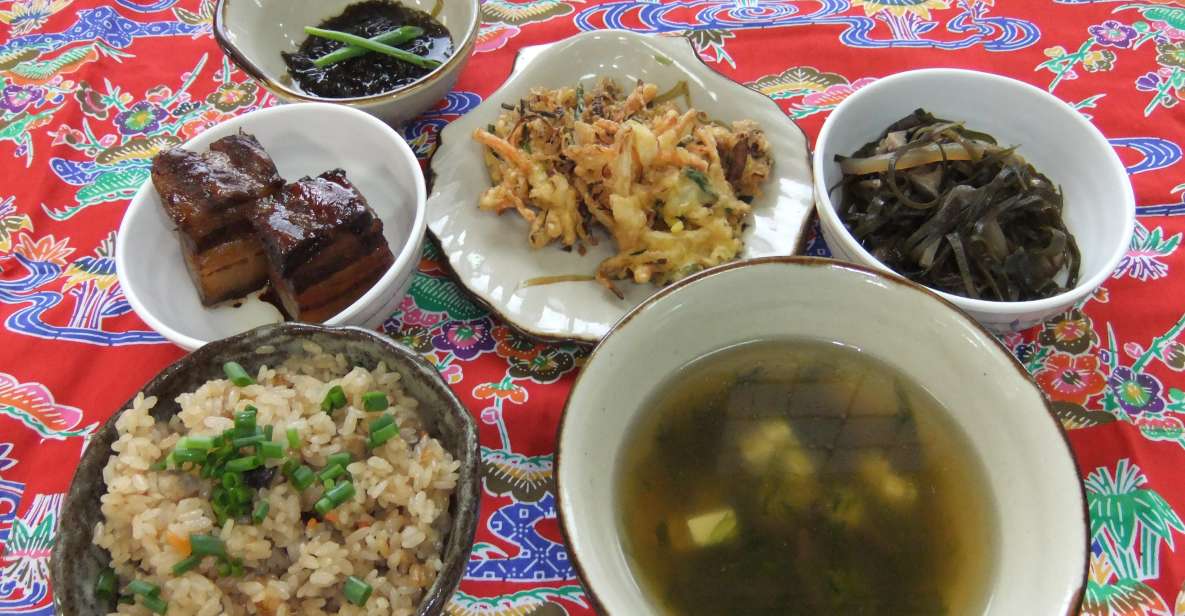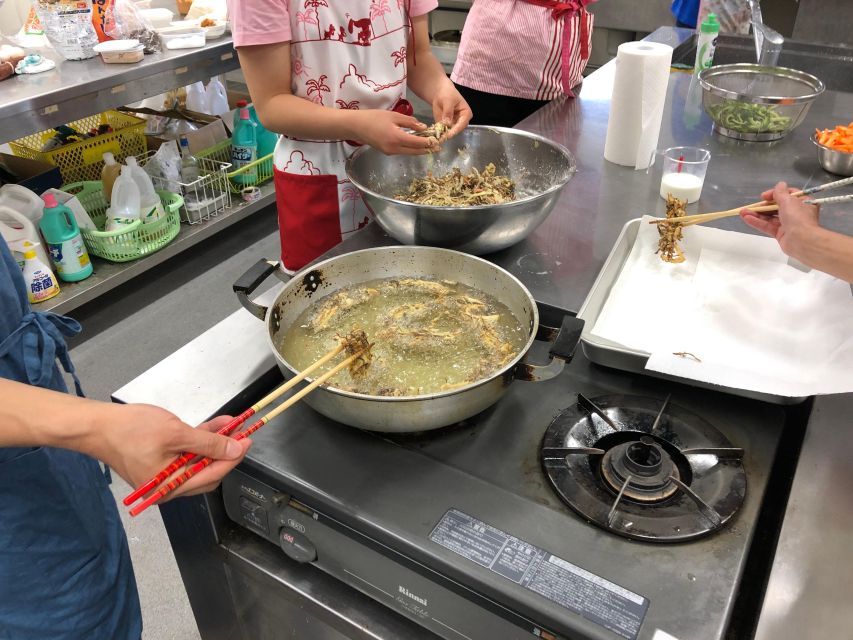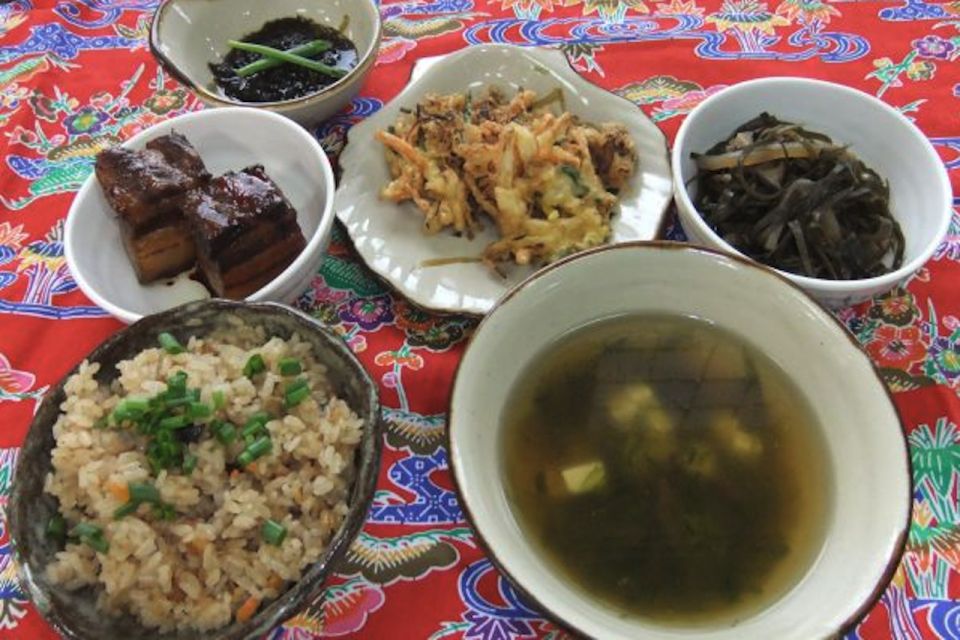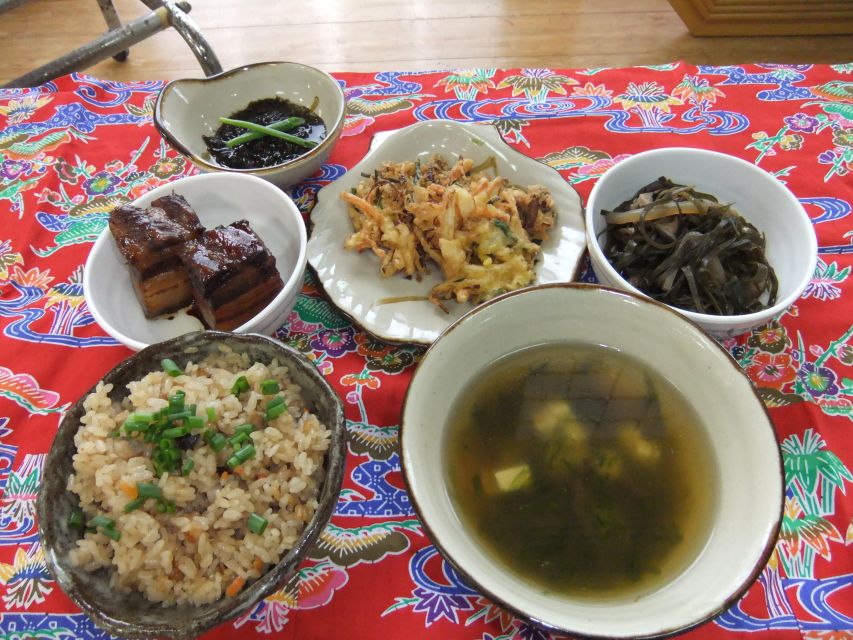When it comes to living a longer, healthier life, many people may scoff at the idea that a specific cuisine can hold the key. But what if there was a place where the residents consistently live well into their hundreds and attribute their longevity to their unique culinary traditions?
Welcome to Okinawa, a small island in Japan that boasts a high number of centenarians and a cuisine that is said to contribute to their remarkable health.
In this article, we will explore the world of Okinawan cuisine and explore its potential health benefits. From fresh, locally sourced ingredients to unique flavors and cooking techniques, Okinawan cuisine offers a wealth of insights into a balanced and nourishing diet.
Join us as we uncover the secrets behind Okinawa’s Longevity Cuisine and discover how you can incorporate these principles into your own life for a longer, healthier future.
Quick Takeaways

- The traditional Okinawan diet is characterized by a high intake of vegetables, especially bitter melon and sweet potatoes, and limited consumption of meat, with a focus on lean protein sources like tofu and fish.
- The diet emphasizes whole grains such as brown rice and barley, and includes regular consumption of seaweed, which is a good source of minerals.
- The Okinawan cuisine is characterized by minimal use of added sugars and processed foods, leading to a lower risk of chronic diseases like heart disease and cancer, reduced rates of obesity and diabetes, and improved cardiovascular health due to low saturated fat intake.
- The key nutrients in Okinawan cuisine include high intake of vitamins and minerals from colorful vegetables and fruits, adequate omega-3 fatty acids from fish consumption, a fiber-rich diet promoting healthy digestion and weight management, and an abundance of antioxidants from green tea and turmeric.
Not for you? Here's a few more great tours and experiences nearby.
Traditional Okinawan Dishes

Okinawa’s traditional dishes showcase the island’s unique culinary heritage. With a rich history and vibrant food culture, Okinawan culinary traditions have been passed down through generations. These dishes not only reflect the local ingredients but also the island’s cultural diversity and influences from China, Southeast Asia, and Japan.
One of the most popular Okinawan dishes is Rafutee, a slow-cooked braised pork belly that’s melt-in-your-mouth tender. It’s often served with Juicy, a flavorful mixed rice dish that combines various ingredients such as vegetables, meat, and seaweed. Asa Jiru, a seaweed soup, is another staple in Okinawan cuisine, known for its light and refreshing taste.
Kubui Ritchi, a stir-fried kombu dish, and Mozuku Su, a vinegar-marinated mozuku seaweed, are also beloved by locals and visitors alike. Tempura, made with seasonal ingredients, adds a delightful crispy touch to Okinawan meals.
These popular Okinawan dishes not only satisfy the taste buds but also provide a glimpse into the island’s history and cultural diversity. They’re a true representation of Okinawa’s culinary traditions and are a must-try for anyone visiting the island.
Health Benefits of Okinawan Cuisine

Okinawan cuisine offers a range of health benefits, making it a popular choice for those seeking a nutritious and wholesome diet. Here are four reasons why Okinawan cuisine is beneficial for health:
- Abundance of vegetables: Okinawan recipes are packed with a variety of vegetables, including bitter melon, sweet potatoes, and seaweed. These vegetables are rich in vitamins, minerals, and antioxidants, which help boost the immune system and protect against chronic diseases.
- Lean protein sources: Okinawan cuisine incorporates lean protein sources such as tofu, fish, and legumes. These protein-rich foods provide essential amino acids for muscle growth and repair, without the excess fat and cholesterol found in red meat.
- Balanced macronutrients: Okinawan recipes focus on a balanced combination of carbohydrates, protein, and healthy fats. This balanced macronutrient profile ensures sustained energy levels, healthy weight management, and overall well-being.
- Limited use of processed ingredients: Okinawan cuisine relies on fresh, whole foods rather than processed ingredients. This reduces the intake of unhealthy additives, preservatives, and trans fats, promoting better digestive health and reducing the risk of chronic diseases.
Cooking Techniques and Ingredients

One important aspect of Okinawan cuisine is the use of traditional cooking techniques and locally-sourced ingredients. The people of Okinawa have passed down their cooking methods from generation to generation, ensuring that the flavors and nutritional benefits of their dishes remain intact. Traditional cooking methods include grilling, stir-frying, simmering, and pickling, which are all designed to enhance the natural flavors of the ingredients.
Locally-sourced ingredients play a crucial role in Okinawan cuisine, as they’re known for their freshness and high quality. The island’s abundant seafood, such as seaweed and fish, is a staple in many dishes. Plus, Okinawans take pride in using a variety of vegetables, herbs, and spices that are grown in their own gardens.
Experiencing Okinawan Longevity Culture
By immersing oneself in the rich traditions and practices of Okinawan longevity culture, you can gain valuable insights into the secrets behind the region’s remarkable health and longevity. Here are four ways to experience Okinawan longevity culture and explore its food culture:
- Participate in a cooking class: Join a cooking class that focuses on Okinawan cuisine, such as braised pork belly (Rafutee) or seaweed soup (Asa Jiru). Learn about the ingredients and techniques that contribute to the unique flavors and health benefits of these dishes.
- Visit a local market: Explore the vibrant local markets in Okinawa and discover the wide variety of fresh fruits, vegetables, and seafood available. Interact with the locals and learn about their traditional food practices and preferences.
- Attend a traditional ceremony: Experience the spirituality and mindfulness that are integral to Okinawan culture by attending a traditional ceremony. Witness the rituals and practices that have been passed down through generations and understand their significance in promoting longevity and well-being.
- Engage with the community: Connect with the Okinawan community by participating in cultural events and festivals. Engage in conversations, listen to stories, and learn from the wisdom of the elders, who hold the key to Okinawa’s longevity secrets.
Tips for Incorporating Okinawan Cuisine Into Your Diet

To incorporate Okinawan cuisine into their diets, you can start by including a variety of traditional dishes using fresh and locally sourced ingredients.
Okinawan cuisine is known for its focus on nutrient-rich foods, and there are several superfoods that are commonly found in Okinawan dishes. These include bitter melon, purple sweet potatoes, goya, and seaweed.
Bitter melon is packed with vitamins and minerals, while purple sweet potatoes are high in antioxidants. Goya, also known as bitter gourd, is believed to have anti-inflammatory properties. Seaweed is rich in iodine and other essential nutrients.
Along With incorporating these superfoods, Okinawan diet tips also emphasize portion control and mindful eating. By adopting these tips and incorporating Okinawan dishes into their diet, you can benefit from the health-promoting properties of this cuisine.
Joining an Okinawan Cooking Class
Individuals looking to learn more about Okinawan cuisine and gain hands-on experience in preparing traditional dishes can join an Okinawan cooking class. Here are four reasons why joining a cooking class in Okinawa is a great way to take in the local culture and discover the cultural significance of Okinawan cuisine:
- Hands-on Experience: Participants have the opportunity to learn from experienced local chefs who’ll guide them through the process of preparing authentic Okinawan dishes. This hands-on experience allows individuals to truly understand the techniques and ingredients used in Okinawan cooking traditions.
- Menu Explanation: The cooking class includes an explanation of the menu, where you will learn about the history and cultural significance of each dish. This not only enhances the cooking experience but also provides insights into the unique flavors and traditions of Okinawan cuisine.
- Flexible Tour Planning: The cooking class offers flexible tour planning with English-speaking staff support. This ensures that participants can easily communicate and engage with the instructors, making the experience enjoyable and educational.
- Cost of Ingredients Included: The cost of ingredients is included in the cooking class, allowing participants to focus on learning and cooking without worrying about additional expenses. This also ensures that participants have access to fresh and authentic ingredients, essential for recreating the flavors of Okinawan cuisine.
Frequently Asked Questions
Are There Any Vegetarian or Vegan Options Available in Okinawan Cuisine?
Okinawan cuisine offers several traditional plant-based dishes that are suitable for vegetarians and vegans. These dishes not only provide health benefits but also contribute to a healthy lifestyle, making Okinawa a perfect destination for those seeking a nutritious and balanced diet.
What Is the Significance of the Ingredients Used in Okinawan Dishes?
The significance of Okinawan ingredients lies in their health benefits. The cuisine’s focus on fresh seafood, nutrient-rich vegetables, and fermented foods contributes to the longevity of Okinawans.
Can I Request for Substitutions or Modifications to the Traditional Okinawan Dishes?
Guests can request modifications or substitutions to the traditional Okinawan dishes during the cooking experience. The menu can be tailored to accommodate dietary restrictions or preferences, ensuring a personalized and enjoyable culinary journey.
How Can I Recreate the Flavors of Okinawan Cuisine at Home?
To recreate the flavors of Okinawan cuisine at home, one can try using traditional Okinawan ingredients like pork belly, seaweed, and vinegar. By learning Okinawan cuisine techniques, such as braising and stir-frying, one can capture the authentic taste of Okinawa.
Are There Any Specific Etiquettes or Customs to Follow When Dining on Okinawan Cuisine?
Okinawan dining etiquette includes traditional customs that enhance the culinary experience. These customs involve showing respect for the food, using chopsticks properly, and eating slowly to savor the flavors.
The Sum Up
To sum it up, Okinawan cuisine offers a fascinating insight into the secrets of longevity and a healthier lifestyle. With its emphasis on fresh, locally sourced ingredients and unique cooking techniques, Okinawan dishes like Rafutee, Juicy, and Asa Jiru provide a nourishing and balanced diet.
By incorporating some of these dietary principles into our own lives, we can take a step towards a longer and healthier future. So why not embark on a culinary journey and discover the wonders of Okinawa’s longevity cuisine?



